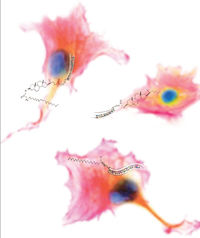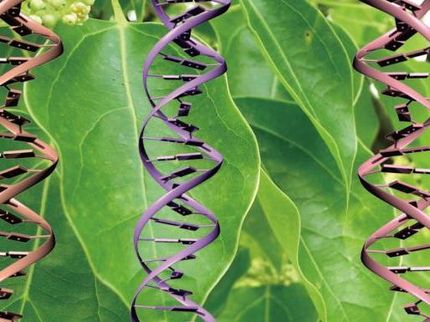Technique enables efficient gene splicing in human embryonic stem cells
Advertisement
A novel technique allows researchers to efficiently and precisely modify or introduce genes into the genomes of human embryonic stem cells (ESCs) and induced pluripotent stem (iPS) cells, according to Whitehead scientists. The method uses proteins called zinc finger nucleases and is described in Nature biotechnology .
For years, scientists have easily swapped genes in and out of mouse ESC or iPS cell genomes, but have had a notoriously difficult time disrupting or inserting genes into their human equivalents.
"It's not clear where this hurdle of genetic manipulation lies; it could be purely technical, but it could also be an inherent difference between human and mouse cells," says Dirk Hockemeyer. Hockemeyer and Frank Soldner are first authors on the article and postdoctoral researchers in Whitehead Member Rudolf Jaensich's lab. "Other people have genetically manipulated these human cells, but the process has been extremely laborious and extremely time consuming. Using the zinc finger nucleases makes the process very easy," says Hockemeyer.
According to Jaenisch, this method could open a new phase in human genetics.
"This is a proof of principle that zinc finger nucleases can be used to swap out many, many additional genes in human ESCs and iPS cells," says Jaenisch, who is also a professor of biology at MIT. "Now human ESC and iPS cell genetics can catch up to mouse genetics, which has had a 20-year headstart."
The inability to alter human ESC and iPS cells' genomes has hindered researchers from routinely creating specific cell types for modeling genetic diseases (e.g., the brain cells affected by Parkinsons's disease) and studying how embryonic stem cells mature into adult cells. To substitute a gene in ESCs and iPS cells, Hockemeyer and Soldner adapted a recently developed technique to cut out one gene from the human ESCs and iPS cells and substitute it with another by putting two zinc finger nucleases and the replacement gene into the ESCs and iPS cells.
Each zinc finger nuclease recognizes a particular sequence in a cell's DNA and then cuts through both strands of DNA at that site. The cell's DNA repair machinery recognizes that the DNA has been cut and tries to fix it using the replacement gene resulting in the desired alteration of the original gene. In addition to working so efficiently, the method can be tailored to precisely swap nearly any gene in the genome.
"We can produce zinc finger nucleases that out of about three billion DNA base pairs can identify one specific site," says Soldner. "We also spent quite a bit of energy to see if the zinc finger nucleases cut somewhere other than the intended target site, and it was very unlikely."
Original publication: Dirk Hockemeyer, Frank Soldner, Caroline Beard, Qing Gao, Maisam Mitalipova, Russell C. DeKelver, George E. Katibah, Ranier Amora, Elizabeth A. Boydston, Bryan Zeitler, Xiangdong Meng, Jeffrey C. Miller, Lei Zhang, Edward J. Rebar, Philip D. Gregory, Fyodor D. Urnov and Rudolf Jaenisch; "Efficient targeting of expressed and silent genes in human ESCs and iPSCs using zinc-finger nucleases" ; Nature Biotechnology 2009.


























































